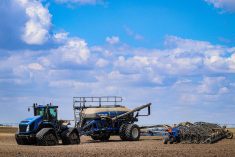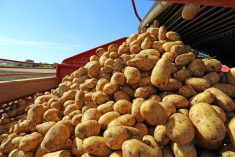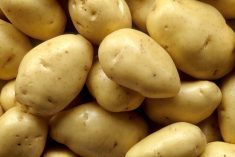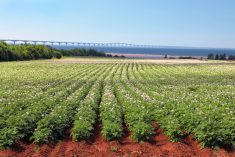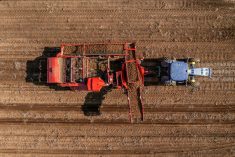Canadian and U.S. food inspectors have agreed on what they mean by a “field” in any restrictions they place on potato trade on account of potato cyst nematodes.
The Canadian Food Inspection Agency (CFIA) and U.S. Department of Agriculture’s Animal and Plant Health Inspection Service (APHIS) on Tuesday announced new revisions to their Guidelines on Surveillance and Phytosanitary Actions for the Potato Cyst Nematodes.
The changes follow requests from potato industry stakeholders, who wanted clarification on how CFIA and APHIS interpret the definition of a potato “field.”
Read Also

Pulse Weekly: Tariffs guide yellow peas in 2025
Tariffs were a major influence on Canadian yellow pea prices in 2025, with levies imposed by China and India. The two countries are Canada’s biggest foreign pulse buyers.
In the sections of the guidelines that deal with a potato plot under regulatory control, the two agencies now say a “field” is “a distinct plot of land distinguished from neighbouring plots of land by physical boundaries such as roads, fences, waterways, etc.”
In cases where potato cyst nematode (PCN) presence is confirmed, CFIA and APHIS said, “the entire field as defined by its physical boundaries will come under regulatory control.”
But in the section of the guidelines that deals with fields cleared to produce and ship seed potatoes for export to the other country, a “field” is now “defined by the boundaries of the specific area of land that was surveyed for PCN.”
Any such fields, if approved for seed potato export, must first test negative for PCN in approved surveys, must have never had a PCN detection and must not otherwise be under PCN regulatory control.
For approved fields, under that section, boundaries must be permanently recorded and traceable using GPS co-ordinates or an accepted form of “physical markers.”
If an area of land sampled for PCN differs from one potato crop to the next, only the area sampled in common to those two potato crops would be the “field” eligible for the PCN survey exemption, assuming all its PCN survey results are negative.
The golden nematode and pale cyst nematode species of PCN are quarantine pests in both Canada and the U.S. If left unmanaged, the two PCNs are known to reduce yields of potatoes and other host crops, such as tomatoes and eggplants, by up to 80 per cent.
PCNs are soil-borne pests that are considered “very difficult” to eradicate because they can persist, dormant in soil, for decades, according to CFIA. Both PCNs have been confirmed in 65 countries, including the U.S.
In Canada, golden nematode is known to be present in Newfoundland, Quebec and Alberta, and on Vancouver Island, while pale cyst nematode is known to be present just in Newfoundland. CFIA imposes quarantines on affected properties to prevent PCNs’ potential spread. — AGCanada.com Network



